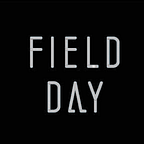Why Teachers Love Siftr for Teaching Visual Arts
“I’ve reduced my grading and yet the quality of the course hasn’t suffered,” Shiela Reaves declared.
Aw, we’re blushing.
Those are high marks for a (free) app that makes it possible for a professor to give students immediate feedback, while eliminating the need for a computer lab.
Shiela used Siftr for the Life Sciences Communication course she taught at the UW-Madison last semester.
Siftr is a free, fun tool that helps people do field research. (See one of the many Siftrs she made here.)
Shiela’s course taught students the neuroscience behind visual communications while helping them improve their photography skills. “We use neuroscience to explain what attracts visual attention so we can work with the visual brain and not against it,” Shiela explained.
When she first heard about Siftr from Margene, she envisioned using a Siftr for the different methods in visual communication she would cover in her course. She set up a Siftr for Faces so her students could learn how to go from a snapshot to a portrait. “Create a portrait or capture a candid that reveals a person and mood. Work composition, great light, motion, pattern, and spontaneity. Relax and be playful.”
She created a Siftr for color and light. “Become a giant eyeball and watch light, highlights, shadows, reflections, and color. Notice neutral or darker backgrounds that add contrast.”
As students uploaded photos to each Siftr, she commented on photos that captured the heart of the assignment and showed promise for the students’ final portfolio. “As soon as I saw Bill’s photo, which he uploaded near Milwaukee, I knew this was a cool technology,” she said. “Seeing the photo in real-time was amazing.”
“As the students upload to Siftr, I can comment about what’s good about their photo,” she said. “It saved me so much time. I could make immediate and personal comments.”
This kind of informal commentary in Siftr created a safe place for students to take chances and work outside their comfort zones. On the students’ best photos, she often left comments like, “portfolio-worthy photo!” to encourage the students throughout the semester.
Siftr also allowed the students to be inspired by the kinds of photos their classmates were taking because everyone could see what each other posts to the Siftr.
As part of the course, Shiela asked students to give class presentations about individual Siftrs. “Could you talk about this Siftr for composition?” she would ask the student. The student would then choose the top three photos for that Siftr assignment and present them in class.
“Students became articulate about what was good about different images. Siftr made it easy for them to critique photos,” Shiela said.
“I’ve taught this course in a computer lab, using Photoshop. It was hard for everyone to see the same images at once. It was very clunky. But Siftr could be used in any classroom. You’re using technology, but you don’t have to have computers. It’s great!”
Shiela looks forward to using Siftr again, maybe even in a writing class. “I learned Siftr on the job, but I easily got into the swing of things. It’s so easy.”
